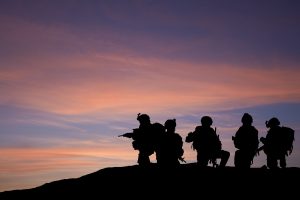Catherine Putz

“There is only one acceptable direction for Afghanistan – away from the battlefield and back to the negotiating table,” the U.N.’s top envoy for Afghanistan, Deborah Lyons, said in briefing this week to the U.N. Security Council.
Lyons, who heads the United Nations Assistance Mission in Afghanistan (UNAMA) urged the council, in conjunction with countries in the region, to “do all it can to push” the Afghan government and the Taliban back to the negotiating table.
“The tragic history of conflict need not repeat itself — but left to its own and our inertia it just might.”
President Joe Biden decided in April to finally end the U.S. war in Afghanistan by removing American troops by the 20th anniversary of the 9/11 attacks this September. But the war in Afghanistan won’t end with the U.S. withdrawal.
The April announcement, Lyons said, “sent a seismic tremor through the Afghan political system and society at large.” Although the decision was expected, the speed of the withdrawal was not.
Back in 2014, then-President Barack Obama announced his plan to withdraw U.S. troops, plotting a two-year timeline for the process that would mark the end of the U.S. “combat mission” in the country. When Obama left office, the roughly 8,400 U.S. troops still in the country were officially on a train, advise, and assist mission — ostensibly helping the Afghans fight the Taliban, and by then, nascent Islamic State elements. As Jessica Donati covered in her recent book, “Eagle Down: The Last Special Forces Fighting the Forever War” the shift in mission didn’t mean that no U.S. troops were involved in combat, but it was a convenient way to keep Afghanistan out of domestic headlines.
In early June, U.S. Central Command estimated that more than 50 percent of the withdrawal process had been completed, including the formal handover of six facilities to the Afghan Ministry of Defense and removal of thousands of pieces of equipment. The Biden administration maintains that it will stage forces “over the horizon” to provide counterterrorism and other support to the Afghan government, but aside from the Persian Gulf it’s not clear where U.S. forces will find a welcoming staging ground. The Taliban have already warned Afghanistan’s neighbors about hosting foreign forces.
Lyons, in her briefing to the Security Council, noted that the withdrawal was one of four parts of the February 2020 agreement between the United States and the Taliban. She noted that the agreement “generated hope that it would create the space for a peace to be made among Afghans.”
“The foreign troops would be gone, and therefore, rather than fighting one another, Afghans would have the opportunity to come together and find a path to peace,” Lyons continued. “But instead, actions on the battlefield have been far greater than progress at the negotiating table.”
Lyons noted that more than 50 of Afghanistan’s 370 districts, many surrounding provincial capitals, had fallen since May to the Taliban. However, as RFE/RL journalist Frud Bezhan highlighted on Twitter recently, the Taliban capture of districts gets more media attention than the government’s swift retaking of the same districts. This isn’t to underestimate the violence or the precariousness of control in any given area, or overestimate the Afghan government’s capabilities, but rather to emphasize that the future is deeply uncertain.
As the U.S. withdrawal progresses, the Taliban have been reluctant to come to the negotiation table, but instead the group is militarily positioning itself.
Lyons stressed that the Taliban continuing their “intensive military campaign would be a tragic course of action” and lamented that the hoped-for conference in Istanbul to “accelerate the stalled negotiations” didn’t work out. Per Lyons’ telling, the Afghan government was prepared to attend but the Taliban never officially responded.
Regarding the Afghan government, Lyons acknowledged that a “lack of unity” in Kabul was alarming. “While some of the shortcomings in Government are part of a legacy of putting politics above governance, the lack of unity must be addressed or risks contributing to further Taliban territorial advances,” she said.
Meanwhile, many have urged the UNAMA to “play a greater role in the peace process,” Lyons said, and “we are prepared and equipped to do so if the parties commit to real negotiations and agree together on a role for the U.N.”
Absent real engagement by the Taliban with the negotiation process, and a lack of unity within the Afghan government, what can the United Nations do?
Lyons mentioned working with countries in the region, which “share grave concerns about an extended and fragmented conflict in Afghanistan” including “refugee flows, migrant movement, increased drug smuggling, terrorism, and lost opportunities for economic connectivity and mutually beneficial trade.” The U.N. and the international community have the capacity to address some of the concerns, but as Lyons said, “We must accept the reality — increased conflict in Afghanistan means increased insecurity for many other countries, near and far.”
No comments:
Post a Comment